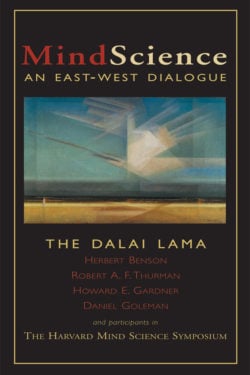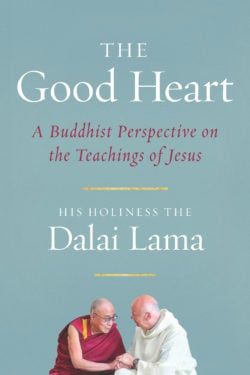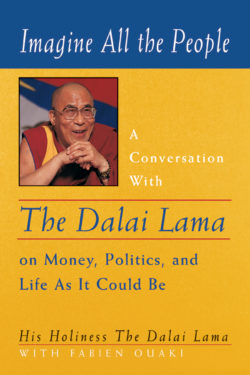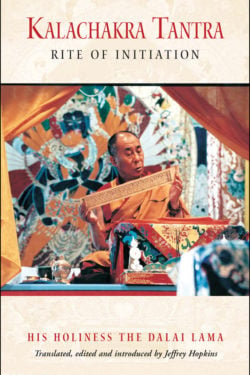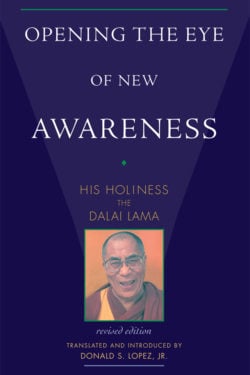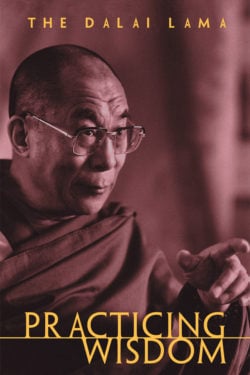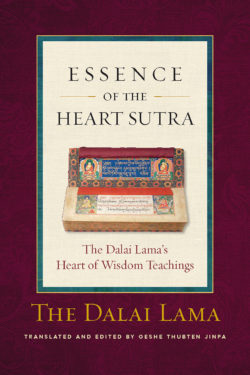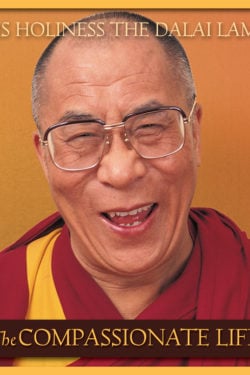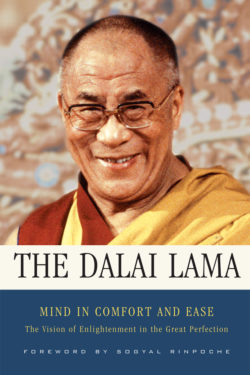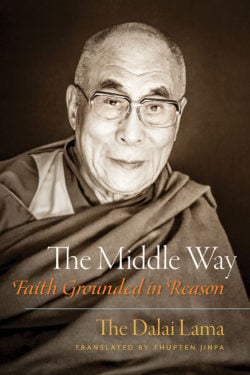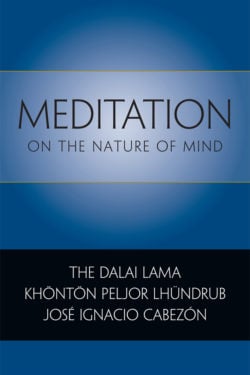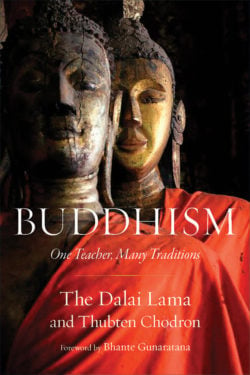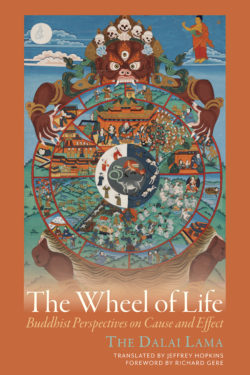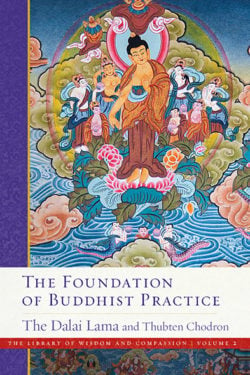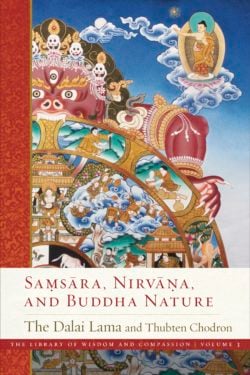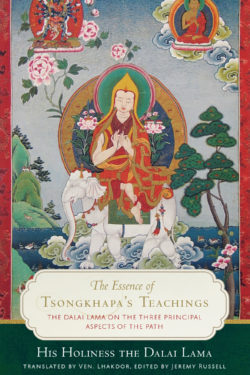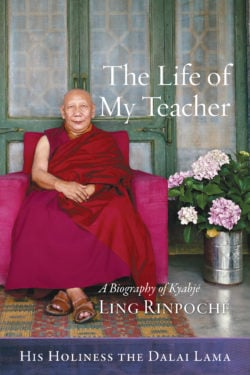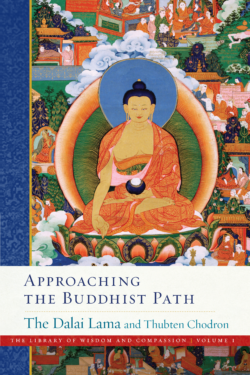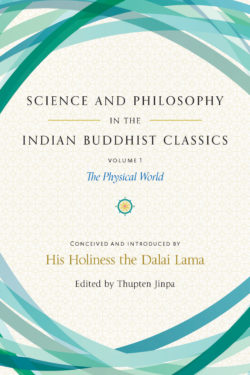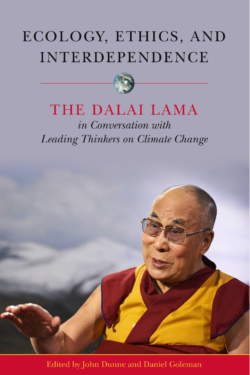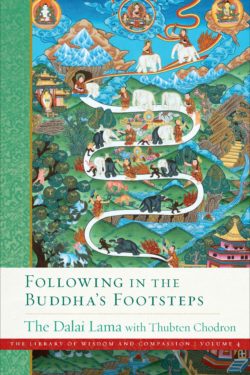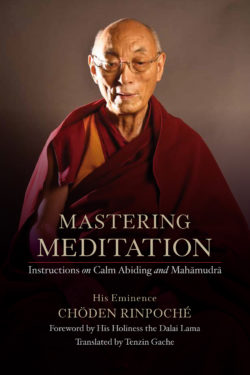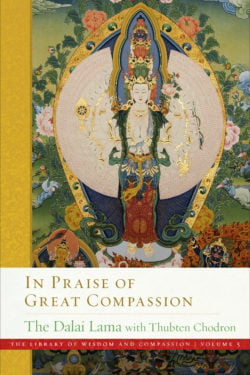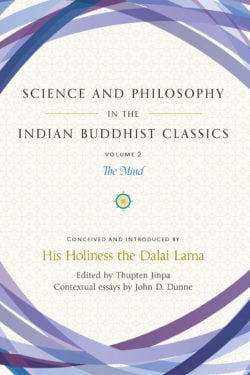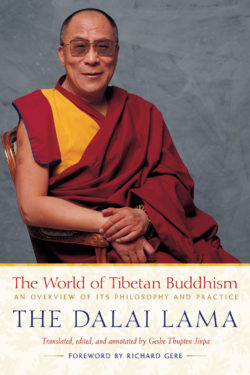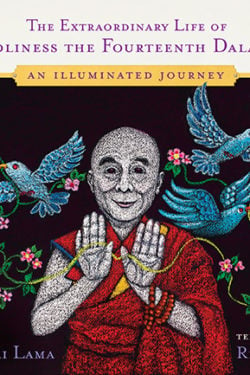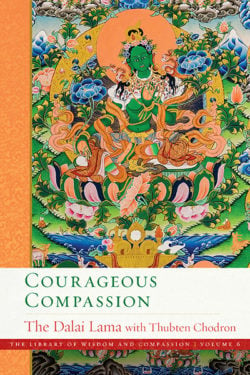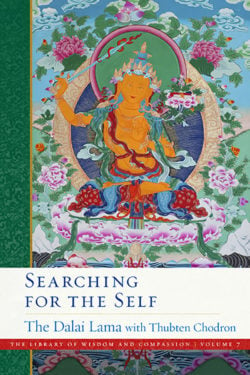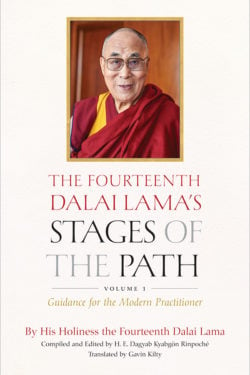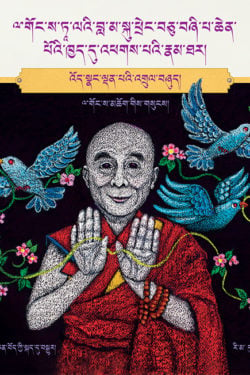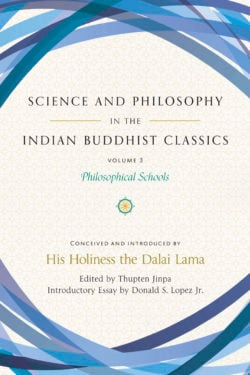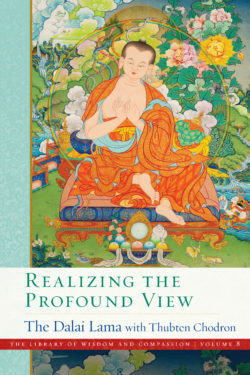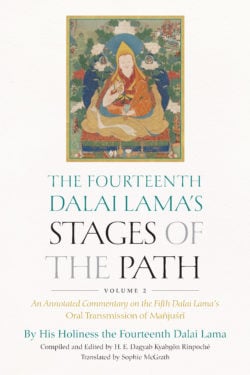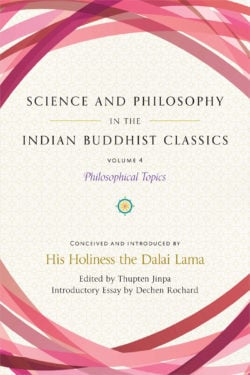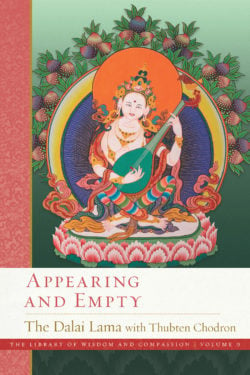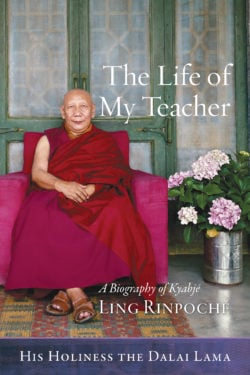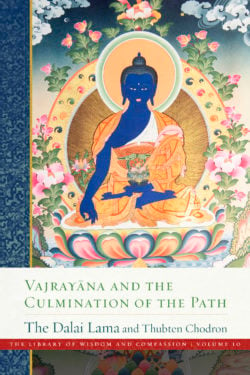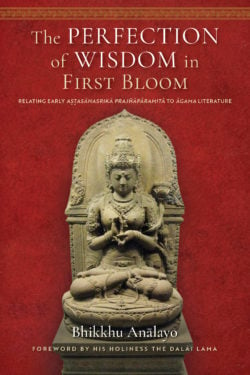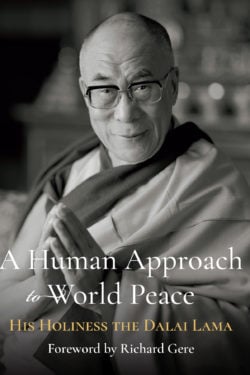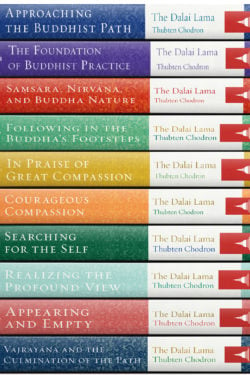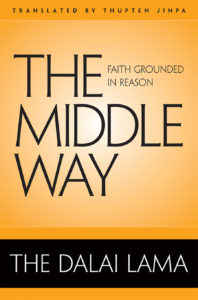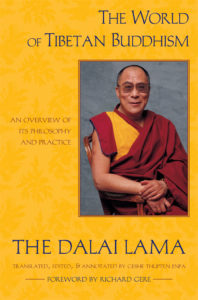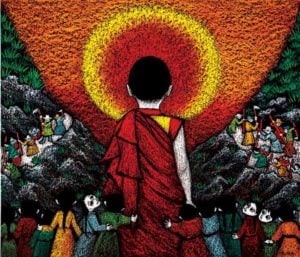His Holiness the Dalai Lama
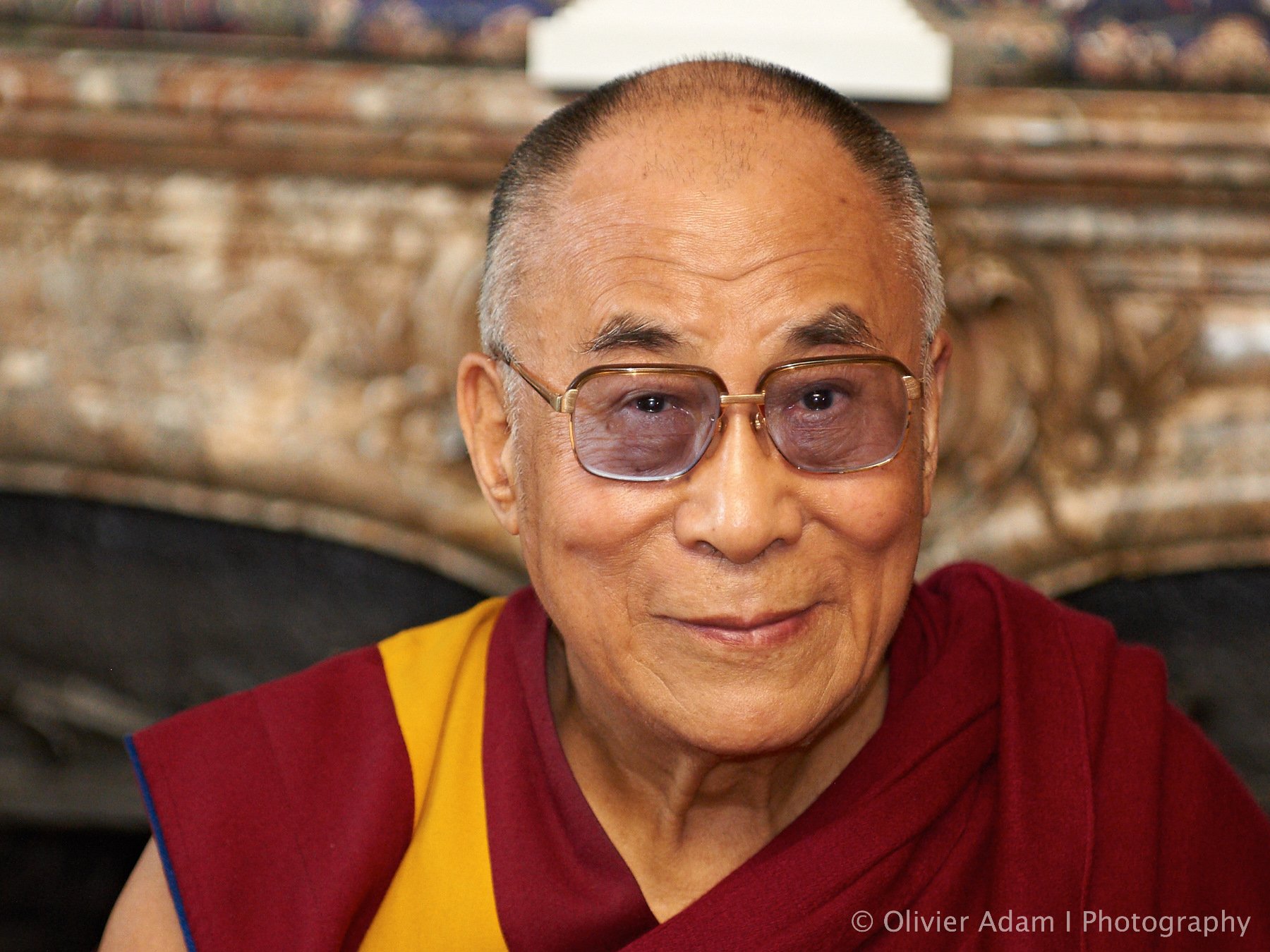
Tenzin Gyatso, the Fourteenth Dalai Lama, is the spiritual leader of the Tibetan people. He frequently describes himself as a simple Buddhist monk. Born in northeastern Tibet in 1935, he was as a toddler recognized as the incarnation of the Thirteenth Dalai Lama and brought to Tibet’s capital, Lhasa. In 1950, Mao Zedong’s Communist forces made their first incursions into eastern Tibet, shortly after which the young Dalai Lama assumed the political leadership of his country. He passed his scholastic examinations with honors at the Great Prayer Festival in Lhasa in 1959, the same year Chinese forces occupied the city, forcing His Holiness to escape to India. There he set up the Tibetan government-in-exile in Dharamsala, working to secure the welfare of the more than 100,000 Tibetan exiles and prevent the destruction of Tibetan culture. In his capacity as a spiritual and political leader, he has traveled to more than sixty-two countries on six continents and met with presidents, popes, and leading scientists to foster dialogue and create a better world. In recognition of his tireless work for the nonviolent liberation of Tibet, the Dalai Lama was awarded the Nobel Peace Prize in 1989. In 2012, he relinquished political authority in his exile government and turned it over to democratically elected representatives.
His Holiness frequently states that his life is guided by three major commitments: the promotion of basic human values or secular ethics in the interest of human happiness, the fostering of interreligious harmony, and securing the welfare of the Tibetan people, focusing on the survival of their identity, culture, and religion. As a superior scholar trained in the classical texts of the Nalanda tradition of Indian Buddhism, he is able to distill the central tenets of Buddhist philosophy in clear and inspiring language, his gift for pedagogy imbued with his infectious joy. Connecting scientists with Buddhist scholars, he helps unite contemplative and modern modes of investigation, bringing ancient tools and insights to bear on the acute problems facing the contemporary world. His efforts to foster dialogue among leaders of the world’s faiths envision a future where people of different beliefs can share the planet in harmony. Wisdom Publications is proud to be the premier publisher of the Dalai Lama’s more serious and in-depth works.
Photo of His Holiness provided by Olivier Adam.
Books, Courses & Podcasts
MindScience
What is the subtle relationship between mind and body? What can today’s scientists learn about this relationship from masters of Buddhist thought? Is it possible that by combining Western and Eastern approaches, we can reach a new understanding of the nature of the mind, the human potential for growth, the possibilities for mental and physical health?
MindScience explores these and other questions as it documents the beginning of a historic dialogue between modern science and Buddhism. The Harvard Mind Science Symposium brought together the Dalai Lama and authorities from the fields of psychiatry, psychology, neuroscience, and education. Here, they examine myriad questions concerning the nature of the mind and its relationship to the body.
Sleeping, Dreaming, and Dying
This is an absorbing account of a dialogue between leading Western scientists and the foremost representative of Buddhism today, the Dalai Lama.
For modern science, the transitional states of consciousness lie at the forefront of research in many fields. For a Buddhist practitioner these same states present crucial opportunities to explore and transform consciousness itself. This book is the account of a historic dialogue between leading Western scientists and the Dalai Lama of Tibet. Revolving around three key moments of consciousness—sleep, dreams, and death—the conversations recorded here are both engrossing and highly readable. Whether the topic is lucid dreaming, near-death experiences, or the very structure of consciousness itself, the reader is continually surprised and delighted.
Narrated by Francisco Varela, an internationally recognized neuroscientist, the book begins with insightful remarks on the notion of personal identity by noted philosopher Charles Taylor, author of the acclaimed Sources of Self. This sets the stage for Dr. Jerome Engel, Dr. Joyce MacDougal, and others to engage in extraordinary exchanges with the Dalai Lama on topics ranging from the neurology of sleep to the yoga of dreams.
Remarkable convergences between the Western scientific tradition and the Buddhist contemplative sciences are revealed. Dr. Jayne Gackenbach’s discussion of lucid dreaming, for example, prompts a detailed and fascinating response from the Dalai Lama on the manipulation of dreams by Buddhist meditators. The conversations also reveal provocative divergences of opinion, as when the Dalai Lama expresses skepticism about “Near-Death Experiences” as presented by Joan Halifax. The conversations are engrossing and highly readable. Any reader interested in psychology, neuroscience, Buddhism, or the alternative worlds of dreams will surely enjoy Sleeping, Dreaming, and Dying.
The Good Heart
In The Good Heart, the Dalai Lama provides an extraordinary Buddhist perspective on the teachings of Jesus. His Holiness comments on well-known passages from the four Christian Gospels, including the Sermon on the Mount, the parable of the mustard seed, the Resurrection, and others. Drawing parallels between Jesus and the Buddha—and the rich traditions from which they hail—the Dalai Lama delivers a profound affirmation of the sacred in all religions. Readers will be uplifted by the exploration of each tradition’s endless merits and the common humanity they share.
Imagine All the People
If you could sit down with the Dalai Lama and talk with him about anything, what would you discuss? Fabien Ouaki, a prominent French businessman, was granted such an opportunity and asked the Dalai Lama for his thoughts on the everyday issues that fill our newspapers and our lives. This is the record of these varied and remarkable conversations.
Covered are a wide spectrum of topics—political, social, personal and spiritual—including the media and education, marriage and sex, and disarmament and compassion. Blessed by His Holiness’ buoyant and insightful thoughts, Imagine All the People allows readers to glimpse the spontaneous workings of an extraordinary mind at once of—and above—this world.
Includes the full text of The Global Community and the Need for Universal Responsibility.
Kalachakra Tantra
Associated with the promotion of world peace, the Kalachakra—or “Wheel of Time”—tantra is one of the most detailed and encompassing systems of theory and practice within Tibetan Buddhism. This book contains a complete translation of the Kalachakra initiation ritual as conferred by His Holiness the Dalai Lama, along with his commentary and a comprehensive introduction by Professor Jeffrey Hopkins that explores the Kalachakra’s rich symbolism, meaning, and history. The book also includes the Six-Session Yoga.
Opening the Eye of New Awareness
Opening the Eye of New Awareness is a succinct, thorough overview of the doctrines of Buddhism as they have been practiced for a thousand years in Tibet. The Dalai Lama here discusses the need for religious practice and the importance of kindness and compassion. Originally written for Tibetan lay people, this was the Dalai Lama’s first book on Buddhist philosophy to appear in English, and Prof. Lopez’s new introduction places these teachings in their proper historical context. This is an invaluable handbook for both personal use and academic study of the Buddhist path.
“Written for both Tibetan and Western readers, Opening the Eye of New Awareness is the Dalai Lama’s first religious work. It is not an edited transcript of public lectures, but is His Holliness’ own summation of Buddhist doctrine and practice. Completed in 1963, just four years after his escape from Tibet and four years after completing his religious education, it is a work of consummate scholarship by a twenty-seven year-old geshe, wise beyond his years. Nowhere in his many subsequent works does one find a more clear and concise exposition of the essentials of Buddhist thought. Indeed, all of His Holiness’s many publications are in some sense commentaries on this first book.”—Donald S. Lopez Jr.
Practicing Wisdom
Like the bestselling A Flash of Lightning in the Dark of the Night, Practicing Wisdom focuses on Shantideva’s Way of the Bodhisattva. While the former includes only a brief introduction to Shantideva’s complex and crucial ninth chapter on insight, Practicing Wisdom is a full and detailed follow-up commentary, making it an invaluable statement on the fundamental concept behind Buddhist thought and practice.
Shantideva says in his Guide to the Bodhisattva Way of Life: “All branches of the Buddha’s teachings are taught for the sake of wisdom. If you wish to bring an end to suffering, you must develop wisdom.” Shantideva’s ninth chapter is revered in Tibetan Buddhist circles as one of the most authoritative expositions of the Buddha’s core insight, and all other Buddhist practices are means to support the generation of this wisdom within the practitioner. In Practicing Wisdom, the Dalai Lama reaffirms his reputation as a great scholar, communicator, and embodiment of the Buddha’s Way by illuminating Shantideva’s verses, drawing on contrasting commentaries from the Nyingma and Gelug lineages, and leading the reader through the stages of insight up to the highest view of emptiness. These teachings, delivered in southern France in 1993, have been masterfully translated, edited, and annotated by Geshe Thupten Jinpa, the Dalai Lama’s primary translator and founder of the Institute of Tibetan Classics.
Essence of the Heart Sutra
For more than two thousand years, the Heart Sutra has been part of the daily life of millions of Buddhists. This concise text, so rich and laden with meaning, concentrates the very heart of Buddhism into a powerful and evocative teaching on the interdependence of all reality.
In Essence of the Heart Sutra, the Dalai Lama masterfully unpacks the Heart Sutra so that any reader can benefit from its teachings—teachings meant to help us release ourselves from suffering and live with true compassion. Comprised of his “Heart of Wisdom” talks, originally delivered to thousands of listeners in 2001, the book offers the Dalai Lama’s commentary as well as his easy-to-follow overview of Buddhist philosophy that places the sutra within its historical and philosophical context. With additional contributions by scholar and translator Thupten Jinpa, Essence of the Heart Sutra is the authoritative presentation of a text seminal to the world’s religious heritage.
The Compassionate Life
“The key to a happier and more successful world is the growth of compassion.”—His Holiness the Dalai Lama
Giving and receiving affection is the key to happiness, and compassion is the key that opens our hearts to affection. Illuminating themes touched upon in The Good Heart and The Art of Happiness, this generous and gentle book contains some of the most beloved teachings on compassion that the Dalai Lama has ever offered. Touching and transformative, The Compassionate Life is a personal invitation from one of the world’s most gifted teachers to live a life of happiness, joy, and true prosperity.
Collected here for the first time are four of the Dalai Lama’s most accessible and inspiring teachings on compassion. The purpose of life is to be happy, His Holiness reminds us. To be happy, we should devote ourselves to developing our own peace of mind; the more we care for the happiness of others, the greater our own peace of mind. Therefore, we must develop compassion for others in order to be truly happy.
In these four teachings—imbued with the gentle humor and extraordinary kindness of this incomparable teacher—His Holiness explores altruism and the need for compassion on an individual as well as a global scale. He offers specific practices for developing loving-kindness and compassion in even the most difficult situations.
Mind in Comfort and Ease
Here, in a teaching of outstanding completeness and clarity, the Dalai Lama sets out the key principles of Buddhism, showing how the mind can be transformed, and suffering overcome, through love, compassion, and a true understanding of the nature of reality. By illustrating his brilliant overview of the path with his own personal experiences and advice on how to integrate the practice, the Dalai Lama brings these teachings to life.
The Dalai Lama delves deep into the teaching of the Great Perfection, or Dzogchen. His enthusiasm and admiration for this profound tradition shine through as he comments on an important work by the great Dzogchen master Longchen Rabjam, Finding Comfort and Ease in Meditation on the Great Perfection.
Blending the highest wisdom with the deepest compassion and humanity, Mind in Comfort and Ease offers a glimpse into the Dalai Lama’s wisdom mind and a panoramic view of the Buddhist path.
The Middle Way
The Dalai Lama opens The Middle Way with an elegant argument for the power of compassion in cultivating a happy life. From there, he connects core ideas of Buddhist philosophy to the truths of our shared condition. His Holiness delivers a sparklingly clear teaching on how the Buddhist ideas of emptiness and interdependency relate to personal experience and bring a deeper understanding of the world around us.
In down-to-earth style, His Holiness sets forth a comprehensive explanation of the Mahayana tradition based on two of Buddhism’s most revered figures and their renowned works: Nagarjuna’s Middle Way and Tsongkhapa’s Three Principal Aspects of the Path. Both works are rooted in the ancient Indian scholastic tradition of Nalanda Monastery, which approached Buddhism not just through faith and devotion, but through critical inquiry.
Through these beautifully complementary teachings, His Holiness urges us to strive “with an objective mind, endowed with a curious skepticism, to engage in careful analysis and seek the reasons behind our beliefs,” for only faith grounded in reason is truly unshakable.
Hardcover edition
Read Tsongkhapa’s biography at the Treasury of Lives.
Meditation on the Nature of Mind
“We all have the same human mind—each and every one of us has the same potential. Our surroundings and so forth are important, but the nature of mind itself is more important… To live a happy and joyful life, we must take care of our minds.”—His Holiness the Dalai Lama
At the heart of this book is The Wish-Fulfilling Jewel of the Oral Tradition, an accessible and nonsectarian treatise on penetrating the nature of mind by Khöntön Peljor Lhündrub, a teacher of the Fifth Dalai Lama. His Holiness the Fourteenth Dalai Lama’s broad-ranging overview of this work insightfully distills some of the most central themes of Buddhism: why the mind is so essential to the tradition, what distinguishes the levels of consciousness, and how different schools of Tibetan Buddhism elaborate those distinctions. Profound and erudite, it brings the reader closer to a fresh and direct experience of Buddhism’s central truths.
Along with his lucid translations, José Cabezón provides an introduction to the root text and presentations of the life and works of Khöntön Rinpoche, all richly annotated.
- Read Khöntön Peljor Lhündrub’s biography at the Treasury of Lives.
Buddhism
Take the online course based on this book!
Winner of an IndieFab Award from Foreword Reviews!
Buddhism is practiced by hundreds of millions of people worldwide, from Tibetan caves to Tokyo temples to redwood retreats. To an outside viewer, it might be hard to see what they all have in common. In Buddhism, His Holiness the Dalai Lama and American Buddhist nun Thubten Chodron map out with clarity the convergences and the divergences between the two major strains of Buddhism—the Sanskrit traditions of Tibet and East Asia and the Pali traditions of Sri Lanka and Southeast Asia. Especially deep consideration is given to the foundational Indian traditions and their respective treatment of such central tenets as
- the four noble truths
- the practice of meditation
- the meaning of nirvana
- enlightenment.
The authors seek harmony and greater understanding among Buddhist traditions worldwide, illuminating the rich benefits of respectful dialogue and the many ways that Buddhists of all stripes share a common heritage and common goals.
The Wheel of Life
Using the traditional Buddhist allegorical image of the Wheel of Life and the teaching of the twelve links of dependent origination, the Dalai Lama deftly illustrates how our existence, though fleeting and often full of woes, brims with the potential for peace and happiness. We can realize that potential by cultivating a wise appreciation of the interdependency of actions and experience, and by living a kind and compassionate life. A life thus lived, the Dalai Lama teaches, becomes thoroughly meaningful for both oneself and for others.
The Foundation of Buddhist Practice
The Foundation of Buddhist Practice contains the important teachings that will help us establish a flourishing Dharma practice, beginning with the four seals shared by all Buddhist philosophies, and moves on to an explanation of the reliable cognition that allows us to evaluate the veracity of the Buddha’s teachings.
The book provides many other essential Buddhist teachings, including:
-
the relationship of a spiritual mentor and student, clarifying misunderstandings about this topic and showing how to properly rely on a spiritual mentor in a healthy, appropriate, and beneficial manner;
-
how to structure a meditation session;
-
dying and rebirth, unpacking the often difficult-to-understand topic of multiple lives and explaining how to prepare for death and aid someone who is dying;
-
a fruitful explanation of karma and its results;
-
and much more.
His Holiness’s illumination of key Buddhist ideas will support Western and contemporary Asian students in engaging with this rich tradition.
Learn more about the Library of Wisdom and Compassion series.
Samsara, Nirvana, and Buddha Nature
Knowledge of buddha nature reveals and reconciles the paradox of how the mind can be the basis for both the duhkha of samsara (the unpurified mind) and the bliss and fulfillment of nirvana (the purified mind). To illustrate this, Saṃsāra, Nirvāṇa, and Buddha Nature first takes readers through Buddhist thought on the self, the four truths, and their sixteen attributes. It then explains afflictions—including how they arise and their antidotes—followed by an examination of karma and cyclic existence, and, finally, a deep and thorough elucidation of buddha nature. Saṃsāra, Nirvāṇa, and Buddha Nature shows us how to purify our minds and cultivate awakened qualities.
This is the third volume in the Dalai Lama’s definitive and comprehensive series on the stages of the Buddhist path, The Library of Wisdom and Compassion. Volume 1, Approaching the Buddhist Path,contains introductory material that sets the context for Buddhist practice. Volume 2, The Foundation of Buddhist Practice, describes the important teachings that help us establish a flourishing Dharma practice. Saṃsāra, Nirvāṇa, and Buddha Nature can be read as the logical next step in this series or enjoyed on its own.
Learn more about the Library of Wisdom and Compassion series.
The Essence of Tsongkhapa’s Teachings
His Holiness the Dalai Lama’s commentary on Tsongkhapa’s Three Principal Aspects of the Path helps us integrate the full Buddhist path into our own practice. His Holiness offers a beautiful elucidation of the three aspects of the path: true renunciation and the wish for freedom, the altruistic awakening mind (bodhichitta), and the correct view of emptiness. These three aspects of the path are the foundation of all the sutric and tantric practices, and encapsulate Tsongkhapa’s vision of the Buddhist path in its entirety.
Practitioners will find The Three Principal Aspects of the Path invaluable as a manual for daily meditation. The universal and timeless insights of this text speak to contemporary spiritual aspirants, East and West. The root verses are presented in both Tibetan and fluid English translation to accompany these profound teachings.
The Life of My Teacher (Paperback)
The Sixth Ling Rinpoché (1903–83) was a towering figure in Tibetan Buddhism. Combining great learning with great humility, he was ordained by the Thirteenth Dalai Lama and went on to serve as the the head of the Geluk tradition and as the senior tutor to the present Dalai Lama. In temperament and wisdom, he had a profound influence on the Dalai Lama’s spiritual development, and he became a steadying presence for His Holiness during the chaotic changes that defined the Tibetan experience of the twentieth century, with the invasion of their county by Communist forces and the subsequent rebuilding of their culture in India. Ling Rinpoché’s extensive travels among exiled communities abroad and across India bouyed the spirits of the Tibetan diaspora, and the training and activities of this consummate Buddhist master, here told by the Dalai Lama in the traditional Tibetan style, will inspire and amaze. Over one hundred archival photos bring the text in this book to life.
Approaching the Buddhist Path
Now in Paperback!
His Holiness the Dalai Lama has been publicly teaching Buddhism for decades. The Library of Wisdom and Compassion collects his presentations of every step of the path to enlightenment, compiled and coauthored by one of his chief Western disciples, the American nun Thubten Chodron.
The Buddha wanted his students to investigate, to see for themselves whether what he said were true. As a student of the Buddha, the Dalai Lama promotes the same spirit of investigation, and as the rich tradition of the Buddha makes its way into new lands and cultures, His Holiness has recognized that new approaches are needed to allow seekers in the West to experience the relevance of the liberating message in their own lives. Such an approach cannot assume listeners are free from doubt and already have faith in Buddhism’s basic tenets. The Library of Wisdom and Compassion series, therefore, starts from the universal human wish for happiness and presents the dynamic nature of the mind. This first volume also provides a wealth of reflections on Buddhist history and fundamentals, contemporary issues, and the Dalai Lama’s own personal experiences. It stands alone as an introduction to Buddhism, but it also provides a foundation for the systematic illumination of the path in the volumes to come.
Learn more about the Library of Wisdom and Compassion series.
The Library of Wisdom and Compassion collects the Dalai Lama’s decades of presentations of every step of the path to enlightenment. It has been compiled and coauthored by one of his chief Western disciples, the American nun Thubten Chodron.
Science and Philosophy in the Indian Buddhist Classics, Vol. 1
Under the visionary supervision of His Holiness the Dalai Lama, Science and Philosophy in the Indian Buddhist Classics brings together classical Buddhist explorations of the nature of our material world and the human mind and puts them into context for the modern reader. It is the Dalai Lama’s view that the explorations by the great masters of northern India in the first millennium CE still have much that is of interest today, whether we are Buddhist or not.
Volume 1, The Physical World, explores the nature of our material world—from the macroscopic to the microscopic. It begins with an overview of the many frameworks, such as the so-called five aggregates, that Buddhist thinkers have used to examine the nature and scope of reality. Topics include sources of knowledge, the scope of reason, the nature and constituents of the material world, theories of the atom, the nature of time, the formation of the universe, and the evolution of life, including a detailed explanation of the early Buddhist theories on fetal development. The volume even contains a brief presentation on early theories about the structure and function of the brain and the role of microorganisms inside the human body. The book weaves together passages from the works of great Buddhist thinkers such as Asaṅga, Vasubandhu, Nāgārjuna, Dignāga, and Dharmakīrti. Each of the major topics is introduced by Thupten Jinpa, the Dalai Lama’s principal English-language translator and founder of the Institute of Tibetan Classics.
Explore the entire series here.
Ecology, Ethics, and Interdependence
Engage with leading scientists, academics, ethicists, and activists, as well as His Holiness the Dalai Lama and His Holiness the Karmapa, who gathered in Dharamsala, India, for the twenty-third Mind and Life conference to discuss arguably the most urgent questions facing humanity today:
-
What is happening to our planet?
-
What can we do about it?
-
How do we balance the concerns of people against the rights of animals and against the needs of an ecosystem?
-
What is the most skillful way to enact change?
-
And how do we fight on, even when our efforts seem to bear no fruit?
Inspiring, edifying, and transformative, this should be required reading for any citizen of the world.
Following in the Buddha’s Footsteps
Delve into the substance of spiritual practice in this fourth volume of the Dalai Lama’s definitive series on the path to awakening, Following in the Buddha’s Footsteps. You’ll first hear His Holiness’s explanation of the Buddha, Dharma, and Sangha, why they are reliable guides on the path, and how to relate to them. His Holiness then describes the three essential trainings common to all Buddhist traditions: the higher trainings in ethical conduct, concentration, and wisdom. These chapters show us how to live a life free of harm to self or others and give us detailed instructions on how to develop single-pointed concentration as well as the higher states of concentration available to an earnest practitioner. In addition, the chapters on wisdom contain in-depth teachings on the noble eightfold path and the four establishments of mindfulness for developing greater awareness and understanding of our body, feelings, mind, and other phenomena. Together, these topics form the core of Buddhist practice.
This is a book to treasure and refer to repeatedly as you begin the path, progress on it, and near the final goal of nirvāṇa.
Learn more about the Library of Wisdom and Compassion series.
Mastering Meditation
Mastering Meditation gives you the experience of studying with one of the greatest meditation masters of the modern age. His Eminence Chöden Rinpoché was not only a celebrated scholar, honored by selection as a debate partner to His Holiness the Dalai Lama, but he was also an accomplished yogi who spent nineteen years in solitary meditation retreat. In this thorough and thoroughly clear book, Rinpoché offers meticulous explanations and profound practical instructions on two essential practices in Tibetan Buddhism: calm abiding and mahāmudrā.
The first part of this book contains instructions for developing calm abiding, an unshakable single-pointedness of mind. The second part, Rinpoché’s direct commentary on the Fourth Paṇchen Lama’s foundational text, offers advanced instructions on using calm abiding as a platform to develop mahāmudrā. Rinpoché elucidates both sūtra-system mahāmudrā—meditation on the emptiness of the mind—as well as mantra-system mahāmudrā, a specialized meditation that uncovers subtle, hidden levels of mind to pierce into the ultimate nature of self and reality, leading finally to complete enlightenment.
Drawing from his vast learning and personal experience, Rinpoché provides readers with an open gateway to remarkable states of lucidity and peace.
In Praise of Great Compassion
In Praise of Great Compassion, the fifth volume of the Library of Wisdom and Compassion, continues the Dalai Lama’s teachings on the path to awakening. While previous volumes focused on our present situation and taking responsibility for creating the causes of happiness, this volume concerns opening our hearts and generating the intention to make our lives meaningful by benefiting others.
We are embedded in a universe with other living beings, all of whom have been kind to us in one way or another. More than any other time in human history, we depend on one another to stay alive and flourish. When we look closely, it becomes apparent that we have been the recipient of great kindness. Wanting to repay others’ kindness, we cultivate a positive attitude by contemplating the four immeasurables of love, compassion, empathic joy, and equanimity, and the altruistic intention of bodhicitta. We learn to challenge the self-centered attitude that leads to misery and replace it with a more realistic perspective enabling us to remain emotionally balanced in good and bad times. In this way, all circumstances become favorable to the path to awakening.
Learn more about the Library of Wisdom and Compassion series.
Science and Philosophy in the Indian Buddhist Classics, Vol. 2
This, the second volume in the Science and Philosophy in the Indian Buddhist Classics series, focuses on the science of mind. Readers are first introduced to Buddhist conceptions of mind and consciousness and then led through traditional presentations of mental phenomena to reveal a Buddhist vision of the inner world with fascinating implications for the contemporary disciplines of cognitive science, psychology, emotion research, and philosophy of mind. Major topics include:
- The distinction between sensory and conceptual processes and the pan-Indian notion of mental consciousness
- Mental factors—specific mental states such as attention, mindfulness, and compassion—and how they relate to one another
- The unique tantric theory of subtle levels of consciousness, their connection to the subtle energies, or “winds,” that flow through channels in the human body, and what happens to each when the body and mind dissolve at the time of death
- The seven types of mental states and how they impact the process of perception
- Styles of reasoning, which Buddhists understand as a valid avenue for acquiring sound knowledge
In the final section, the volume offers what might be called Buddhist contemplative science, a presentation of the classical Buddhist understanding of the psychology behind meditation and other forms of mental training.
To present these specific ideas and their rationale, the volume weaves together passages from the works of great Buddhist thinkers like Asaṅga, Vasubandhu, Nāgārjuna, Dignāga, and Dharmakīrti. His Holiness the Dalai Lama’s introduction outlines scientific and philosophical thinking in the history of the Buddhist tradition. To provide additional context for Western readers, each of the six major topics is introduced with an essay by John D. Dunne, distinguished professor of Buddhist philosophy and contemplative practice at the University of Wisconsin. These essays connect the traditional material to contemporary debates and Western parallels, and provide helpful suggestions for further reading.
Explore the entire series here.
The World of Tibetan Buddhism
With characteristic humility, His Holiness the Dalai Lama begins this landmark survey of the entire Buddhist path by saying, “I think an overview of Tibetan Buddhism for the purpose of providing a comprehensive framework of the path may prove helpful in deepening your understanding and practice.” In this book, the Dalai Lama delivers a presentation that is both concise and profound, accessible and engaging. As readers explore Tibetan Buddhism more fully than ever before, they will find in His Holiness a great friend and authority.
To read an excerpt from The World of Tibetan Buddhism regarding altruism, follow this link.
Hardcover edition
The Extraordinary Life of His Holiness the Fourteenth Dalai Lama
One of the most revered spiritual figures of our time—His Holiness the Fourteenth Dalai Lama—tells the story of his life in this intimate, timeless, and approachable book. Featuring luminous illustrations from world-renowned artist Rima Fujita and some never-before-shared details, it’s the perfect way to explore the life of the Dalai Lama. This simple yet powerful text combined with stunning artwork will captivate readers of all ages—and will take you on a mystical journey you won’t soon forget.
Also available in Tibetan.
Courageous Compassion
Courageous Compassion, the sixth volume of the Library of Wisdom and Compassion, continues the Dalai Lama’s teachings on the path to awakening. The previous volume, In Praise of Great Compassion, focused on opening our hearts with love and compassion for all living beings, and the present volume explains how to embody compassion and wisdom in our daily lives. Here we enter a fascinating exploration of bodhisattvas’ activities across multiple Buddhist traditions—Tibetan, Theravāda, and Chinese Buddhism.
After explaining the ten perfections according to the Pāli and Sanskrit traditions, the Dalai Lama presents the sophisticated schema of the four paths and fruits for śrāvakas and solitary realizers and the five paths for bodhisattvas. Learning about the practices mastered by these exalted practitioners inspires us with knowledge of our minds’ potential. His Holiness also describes buddha bodies, what buddhas perceive, and buddhas’ awakening activities.
Courageous Compassion offers an in-depth look at bodhicitta, arhatship, and buddhahood that you can continuously refer to as you progress on the path to full awakening.
Learn more about the Library of Wisdom and Compassion series.
Searching for the Self
In Searching for the Self the Dalai Lama leads us to delve deeply into the topic of the emptiness of inherent existence, presenting it from a variety of approaches while focusing on identifying our erroneous views and directing us to the actual mode of existence of all persons and phenomena.
Placing our study of reality within the auspicious context of a compassionate motivation to benefit all sentient beings, the Dalai Lama explains why realizing emptiness is important and what qualities are needed to do that, and he evaluates various tenet systems’ perspectives on this vast topic. He then helps us understand our perceptions and the mental states involved in both our ignorant and accurate cognitions. He examines inherent existence and other fantasized ways of existence that we seek to disprove through reasoned analysis and presents the Middle Way view that abandons all extremes. The closing chapters by Thubten Chodron discuss the three characteristics of impermanence, unsatisfactoriness, and not-self as explained in the Pāli tradition and show how meditation on these can lead to the meditative breakthrough to realize nirvāṇa.
Engaging in this investigation with His Holiness will challenge our deepest-held beliefs and uproot false ways of viewing ourselves and the world that are so habitual we don’t even notice them. Get ready to be challenged and intrigued, for realizing the nature of reality has the power to cut our defilements at the root and free us from cyclic existence forever!
Learn more about the Library of Wisdom and Compassion series.
The Fourteenth Dalai Lama’s Stages of the Path, Volume 1
Discover His Holiness the Dalai Lama’s advice for finding happiness, helping others, and applying insights from Buddhist thought to everyday life—for a life of greater harmony, meaning, and joy, for ourselves, others, and in our world.
This first volume of The Fourteenth Dalai Lama’s Stages of the Path shares His Holiness’s teachings on specific topics of vital relevance to contemporary life:
– how kindness and compassion are the foundation for individual happiness and world peace;
– how we can solve manmade problems;
– how Buddhism does not conflict with modern science and can actually contribute to its advancement;
– how gender equality is fundamental for a decent and just society;
– and much more.
His Holiness’s messages on these topics will be of value to all readers, Buddhists and non-Buddhists alike. These teachings embody the Dalai Lama’s generous warmth and humor, his expertise in presenting important Buddhist ideas, and his ability to inspire us toward greater kindness and happiness.
The Fourteenth Dalai Lama’s Stages of the Path, Volume 2: An Annotated Commentary on the Fifth Dalai Lama’s Words of Mañjuśrī is also available.
The Extraordinary Life of His Holiness the Fourteenth Dalai Lama – Tibetan Edition
One of the most revered spiritual figures of our time—His Holiness the Fourteenth Dalai Lama—tells the story of his life in this intimate, timeless, and approachable book. Now available in Tibetan, this beautiful book features luminous illustrations from world-renowned artist Rima Fujita. This simple yet powerful text combined with stunning artwork will captivate readers of all ages—and will take you on a mystical journey you won’t soon forget.
“རི་མ་ཕུ་ཇི་ཏས་བསྒྲིགས་པའི་སྙན་དེབ་འོད་སྣང་ལྡན་པའི་འགྲུལ་བཞུད་འདིས། རང་ཅག་གི་རྣམ་འདྲེན་ཆེན་པོ་༧སྤྱི་ནོར་༧གོང་ས་༧སྐྱབས་མགོན་རྒྱལ་དབང་སྐུ་ཕྲེང་བཅུ་བཞི་པ་ཆེན་པོའི་རྣམ་ཐར་རྣམས། རྒྱལ་བ་ཉིད་ཀྱི་གསུང་དང་ཡང་སྦྲགས་ཏེ་དེང་རབས་ཀྱི་རི་མོའི་རྣམ་པ་དང་བཅས་སྤེལ་བ་འདི་མཇལ་དུས། དེང་རབས་ཀྱི་དཔེ་ཀློག་པ་པོ་སྤྱི་དང་ཁྱད་པར་དུ་གཞོན་སྐྱེས་རྣམས་ལ། རྒྱལ་བའི་གསུང་དང་མཛད་པ་ཆེ་ཁག་རྣམས་བློ་ལ་ཝ་ལེར་ཤར་ཏེ་རྒྱལ་བའི་ཡོན་ཏན་དང་བཀའ་དྲིན་ཟླ་མེད་པ་དག་རྗེས་སུ་དྲན་པའི་དཔེ་དེབ་དམིགས་བསལ་ཅན་ཞིག་ཏུ་འདུག་སྙམ་པ་བྱུང་༑ དེས་ན་རྒྱལ་བའི་རྣམ་ཐར་རས་བྲིས་མ་དེང་རབས་ཀྱི་སྲོལ་དུ་བསྒྲིགས་མཁན་རི་མ་ཕུ་ཇི་ཏ་ལའང་ཆེ་བསྟོད་དང་ལེགས་སོའང་ཞུའོ། །གླང་རི་བ་ལྷ་རམས་ཐུབ་བསྟན་སྦྱིན་པས།”
—Thupten Jinpa, principal translator to His Holiness the Dalai Lama and the author of Fearless Heart: How the Courage to be Compassionate Can Transform Our Lives
Also available in English.
Science and Philosophy in the Indian Buddhist Classics, Vol. 3
Deepen your understanding of meaning and truth with the third volume of the Dalai Lama’s esteemed series Science and Philosophy in the Indian Buddhist Classics.
In this third volume the focus turns to exploring the philosophical schools of India. The practice of presenting the views of various schools of philosophy dates back to the first millennium in India, when proponents of competing traditions would arrange the diverse sets of philosophical positions in a hierarchy culminating in their own school’s superior tenets. Centuries later, relying on the Indian Buddhist treatises, Tibet developed its own tradition of works on tenets (grub mtha’), often centered on the four schools of Buddhist philosophy, using them to demonstrate the philosophical evolution within their own tradition, and within individual practitioners, as they progressed through increasingly more subtle expressions of the true reality.
The present work follows in this venerable tradition, but with a modern twist. Like its predecessors, it presents the views of seven non-Buddhist schools, those of the Samkhya, Vaisesika, Nyaya, Mimamsa, Vedanta, Jaina, and Lokayata, followed by the Buddhist Vaibhasika, Sautrantika, Cittamatra, and Madhyamaka schools, arranging them like steps on a ladder to the profound. But rather than following in the sharply polemical approach of its ancient predecessors, it strives to survey each tradition authentically, relying on and citing the texts sacred to each, allowing the different traditions to speak for themselves. What, it asks, are the basic components of the world we experience? What is the nature of their ultimate reality? And how can we come to experience that for ourselves? See how the rich spiritual traditions of India approached these key questions, where they agreed, and how they evolved through dialogue and debate.
This presentation of philosophical schools is introduced by His Holiness and is accompanied by an extensive introduction and survey by Professor Donald Lopez Jr. of the University of Michigan, who is uniquely qualified to communicate the scope and significance of this literary and spiritual heritage to modern readers.
Explore the entire series here.
Realizing the Profound View
The eighth volume in the Dalai Lama’s definitive and bestselling Library of Wisdom and Compassion series, and the second of three focusing on emptiness.
In Realizing the Profound View the Dalai Lama presents the analysis and meditations necessary to realize the ultimate nature of reality. With attention to Nāgārjuna’s five-point analysis, Candrakīrti’s seven-point examination, and Pāli suttas, the His Holiness leads us to investigate who or what is the person. Are we our body? Our mind? If we are not inherently either of them, how do we exist, and what carries the karma from one life to the next? As we explore these and other fascinating questions, he skillfully guides us along the path avoiding the chasms of absolutism and nihilism and introduces us to dependent arising. We find that although all persons and phenomena lack an inherent essence, they do exist dependently. This nominally imputed mere I carries the karmic seeds. We discover that all phenomena exist by being merely designated by term and concept—they appear as like illusions, unfindable under ultimate analysis but functioning on the conventional level. Furthermore, we come to understand that emptiness dawns as the meaning of dependent arising, and dependent arising dawns as the meaning of emptiness. The ability to posit subtle dependent arisings in the face of realizing emptiness and to establish ultimate and conventional truths as noncontradictory brings us to the culmination of the correct view.
Learn more about the Library of Wisdom and Compassion series.
The Fourteenth Dalai Lama’s Stages of the Path, Volume 2
Central to Buddhism is knowing our own minds. Until we do, we are driven by unconscious, often destructive desire and aversion. We couldn’t have a better guide for inner transformation than the Dalai Lama.
The Fourteenth Dalai Lama’s Stages of the Path, Volume 2: An Annotated Commentary on the Fifth Dalai Lama’s Words of Mañjuśrī is the second volume of the Dalai Lama’s outline of Buddhist theory and practice. Having introduced Buddhist ideas in the context of modern society in volume 1, the Dalai Lama turns here to a traditional presentation of the complete path to enlightenment, from developing faith in the Dharma to attaining the highest wisdom. This book, compiled by the revered Tibetan lama Dagyab Rinpoché, comments on the Fifth Dalai Lama’s stages of the path titled Oral Transmission of Mañjuśrī. The volume will appeal to all readers interested in the Dalai Lama’s works, both those new to Buddhism and those looking to deepen their understanding of the Tibetan presentation of the Buddhist path.
Click here to read about His Holiness the Fourteenth Dalai Lama’s achievements.
The Fourteenth Dalai Lama’s Stages of the Path: Volume 1: Guidance for Modern Practitioners is available here.
Science and Philosophy in the Indian Buddhist Classics, Vol. 4
This fourth and final Science and Philosophy in the Indian Buddhist Classics volume provides, through extensive passages, a window into the works of the great thinkers from the flowering of philosophy in classical India.
This is the second philosophy volume in the Science and Philosophy series. Whereas the first philosophy volume presented the views of the non-Buddhist and Buddhist schools in sequence, the present works selects specific topics for consideration, including the nature of the two truths, the analysis of self, the Yogacara explanation of reality, emptiness in the Madhyamaka tradition, a survey of logic and epistemology, and the Buddhist explanation of language and meaning. Like earlier volumes, it provides, through extensive extracts, a window into the works of the masters of the Nalanda tradition. The final section on language is particularly unique and largely crafted by Thupten Jinpa.
Explore the entire series here.
Appearing and Empty
In Appearing and Empty the Dalai Lama skillfully reveals the Prāsaṅgikas’ view of the ultimate nature of reality so that we will gain the correct view of emptiness, the selflessness of both persons and phenomena, and have the means to eliminate our own and others’ duḥkha.
In this last of three volumes on emptiness, the Dalai Lama takes us through the Sautrāntika, Yogācāra, and Svātantrika views on the ultimate nature of reality and the Prāsaṅgikas’ thorough responses to these, so that we gain the correct view of emptiness—the selflessness of both persons and phenomena. This view entails negating inherent existence while also being able to establish conventional existence: emptiness does not mean nothingness. We then learn how to meditate on the correct view by cultivating pristine wisdom that is the union of serenity and insight as taught in the Pāli, Chinese, and Tibetan traditions. Such meditation, when combined with the altruistic intention of bodhicitta, leads to the complete eradication of all defilements that obscure our minds. This volume also introduces us to the tathāgatagarbha—the buddha essence—and how it is understood in both Tibet and China. Is it permanent? Does everyone have it? In addition, the discussion of sudden and gradual awakening in Zen (Chan) Buddhism and in Tibetan Buddhism is fascinating.
Learn more about the Library of Wisdom and Compassion series.
The Life of My Teacher
The Sixth Ling Rinpoché (1903–83) was a towering figure in Tibetan Buddhism. Combining great learning with great humility, he was ordained by the Thirteenth Dalai Lama and went on to serve as the the head of the Geluk tradition and as the senior tutor to the present Dalai Lama. In temperament and wisdom, he had a profound influence on the Dalai Lama’s spiritual development, and he became a steadying presence for His Holiness during the chaotic changes that defined the Tibetan experience of the twentieth century, with the invasion of their county by Communist forces and the subsequent rebuilding of their culture in India. Ling Rinpoché’s extensive travels among exiled communities abroad and across India bouyed the spirits of the Tibetan diaspora, and the training and activities of this consummate Buddhist master, here told by the Dalai Lama in the traditional Tibetan style, will inspire and amaze. Over one hundred archival photos bring the text in this book to life.
Vajrayāna and the Culmination of the Path
The final volume of the Library of Wisdom and Compassion by His Holiness the Dalai Lama takes us to the uncommon practices and realizations of Vajrayāna and the culmination of the path to the full awakening of a buddha.
His Holiness the Dalai Lama skillfully illuminates the unique qualities and complexities of Vajrayāna, as practiced in Tibet, and clarifies the method to eradicate the subtlest obscurations preventing the full awakening of a buddha. Speaking to newcomers and advanced students alike, he explains the similarities and differences of the Sūtra and Tantra paths. Having gathered many of the doubts and difficult points concerning the tantric path, he clarifies the purpose of receiving proper empowerment by qualified gurus and the ethical restraints and commitments required to enter the path of secret mantra. The paths and stages of the four tantric classes are explained, as are the generation-stage and completion-stage practices of Highest Yoga Tantra. You are introduced to the practices of clear appearance and divine identity common to all tantric sādhanas, as well as the unique practices of illusory body and actual clear light that overcome the subtlest defilements on the mind and eliminate all obscurations quickly.
The understanding of emptiness in Sūtra and Tantra is the same, but the consciousness perceiving emptiness differs. In Highest Yoga Tantra that consciousness is great bliss, which arises from knowing the methods to manipulate the channels, winds, and drops of the subtle body. In short, in Vajrayāna and the Culmination of the Path the Dalai Lama sets out the path that leads to blissful awakening and enables us to be of great benefit to all sentient beings.
Learn more about the Library of Wisdom and Compassion series.
The Perfection of Wisdom in First Bloom
See the formative years of Mahayana Buddhist literature through the lens of the Perfection of Wisdom, expertly analyzed by the venerable scholar-monk Bhikkhu Analayo.
In this work we have a rare perspective on the early history of Mahayana Buddhism and the Perfection of Wisdom (Prajnaparamita), as far as this is still accessible in surviving texts. With his characteristic clarity and precision, Bhikkhu Analayo critically analyzes early Perfection of Wisdom literature based on the earliest extant versions of the Astasahasrika Prajnaparamita, or the Perfection of Wisdom in Eight Thousand Lines, one in Chinese and the other in Gandhari—one of the oldest surviving Mahayana manuscripts discovered to date. In reading this text from the viewpoint of early Buddhist literature, the author shows that what has generally been considered a sharp rupture in the formation of the Mahayana turns out to be more of a gradual evolution.
With his command of the languages of the ancient Buddhist world, scholar-monk Bhikkhu Analayo sifts through the layers of history and unveils new perspectives on the ideas and figures in early Perfection of Wisdom and Mahayana literature, covering such topics as the rhetoric of emptiness and the emerging bodhisattva ideal, as well as the status of women and the practice of self-immolation. In doing so, Bhikkhu Analayo reveals fresh insights into the gradual development that informs the emergence of early Perfection of Wisdom literature. This is a rare opportunity to peer through a window at the beginnings of Mahayana thought—before the traditions had coalesced into the familiar forms we see today.
A Human Approach to World Peace
This free paperback edition of His Holiness’s classic essay is updated and expanded for today’s world, with a new foreword from Richard Gere and beautiful, intimate photographs of His Holiness by Kenro Izu, AT Steele, Richard Gere, Herb Ritts, Manuel Bauer, Nicky Vreeland, and Raghu Rai.
In this moving book, His Holiness the Dalai Lama shares his perspective on the urgent question facing the world today: How do we make our societies more humane, just, and equitable?
Created to commemorate the occasion of His Holiness’s ninetieth birthday, this little book is a monument to honor a life spent ceaselessly calling for peace and tolerance, as well as a clarion call to all citizens of the world. As Richard Gere writes in the foreword, “The healing has begun if we want it.”
In celebration of His Holiness the Dalai Lama’s ninetieth birthday we’re offering this inspiring essay free with the purchase of any book by His Holiness, you only pay for shipping. Simply add code HAWP-FREE to your Dalai Lama book or course order at checkout.
The Library of Wisdom and Compassion 10-Volume Set
This set is comprised of the ten hardcover titles in the series.
The Library of Wisdom and Compassion is a special ten-volume series in which His Holiness the Dalai Lama shares the Buddha’s teachings on the complete path to full awakening that he himself has practiced his entire life. The topics are arranged especially for people seeking practical spiritual advice and are peppered with the Dalai Lama’s own unique outlook. Assisted by his long-term disciple, the American nun Thubten Chodron, the Dalai Lama sets the context for practicing the Buddha’s teachings in modern times and then unveils the path of wisdom and compassion that leads to a meaningful life and sense of personal fulfillment. This series is an important bridge from introductory to profound topics for those seeking an in-depth explanation from a contemporary perspective.

